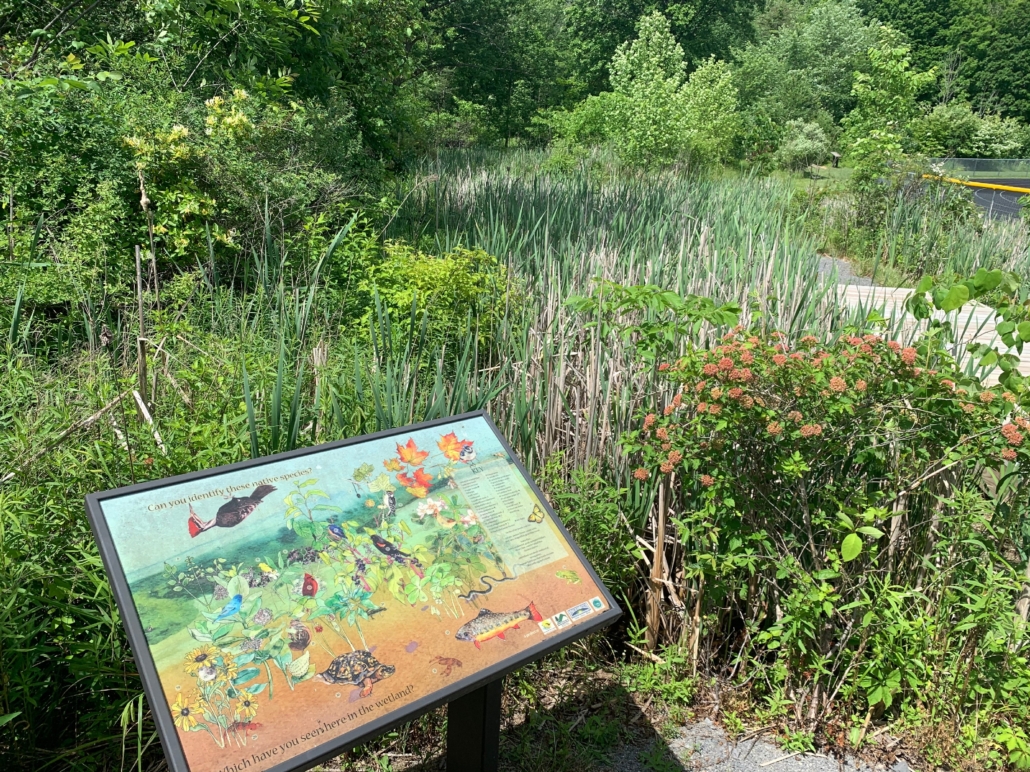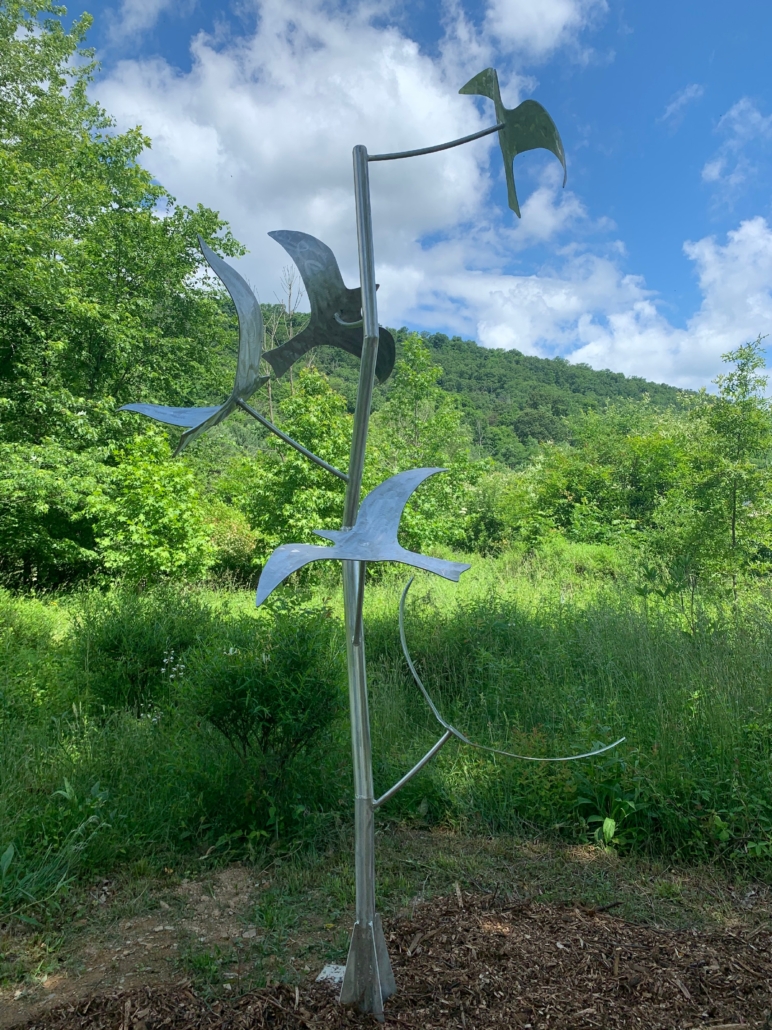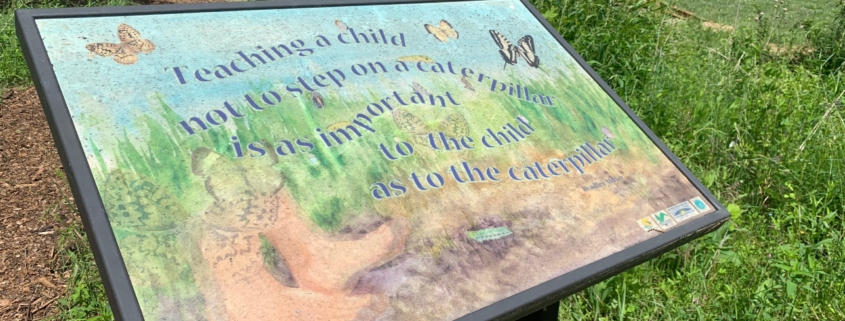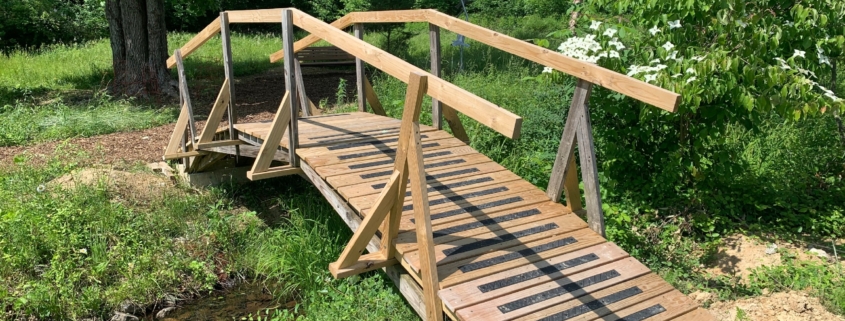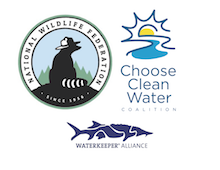Finding Peace in Nature: Widmyer Wetlands
“The challenge is not to be perfect…it’s to be whole.” –Jane Fonda
Dear Friend of WV Rivers,
Wetlands, bogs, and swamps – OH MY!
Close your eyes and think about the most perfect, orderly, manicured wetland you can imagine. Coming up blank? That makes sense, because no such place exists. Wetlands are wild, and wonderful, and you guessed it – wet.
But they are more than that – they are diversity powerhouses. In total, they make up less than one percent of West Virginia’s landscape, but yet they are home to a remarkable 23% of West Virginia plant species and 44% of our rare plants. For all of their splendor, these rare and special places are increasingly threatened by the impacts of development…
So pull back your mental cattails, hike up your thinking muckboots, and let’s dive deep into wetlands in this Finding Peace in Nature blog at the Widmyer Wetlands.
The Widmyer Wetlands rest on the floodplain of the Warm Springs Run, which flows through Berkeley Springs at Widmyer Elementary School. The wetlands trail is open to the public. If you find yourself in the area, stop in for a quick stroll on the short walking trail – you might be impressed at what you find!
To learn a little bit more about the Widmyer Wetlands, and everything it took to protect and enhance this amazing resource, we sat down recently with Kate Lehman – President of the Warm Springs Watershed Association.
Who is the Warm Springs Watershed Association, and what do you do?
“The Warm Springs Watershed Association was formed in 2008 and is led entirely by volunteers. The purpose of our organization is to preserve and protect the Warm Springs Run and its watershed through education and the establishment of partnerships with concerned citizens, civic organizations, and governmental agencies.”
Tell us a little bit more about Warm Springs…
“The Warm Springs Run is an 11.8-mile stream in central Morgan County, WV that drains into the Potomac. The stream parallels US Route 522, and there is no part that is not impacted by bridges, culverts, drainage pipes, and nonexistent riparian buffers. The impervious footprint of the watershed is 19%, which is huge for a small watershed.”
Sculpture built specifically for this project by local artist Mark Schwenk with Frog Valley Artisans.
How does Warm Springs Watershed Association advocate for clean water?
“A stream corridor assessment done in 2007 stated that Warm Springs Run suffers from “an out of sight out of mind” condition. WSWA members have worked hard to make the public aware of the existence of Warm Springs Run and its importance to the community through outreach and education. For the last several years we have shared information on the importance of green stormwater management to reduce the severity of flooding, especially in the Town of Bath. Additionally, we have focused on the installation of a four-lane 522-bypass that will significantly enlarge the impervious footprint of the watershed. We also advocate for green stormwater best management programs, which are cheaper to install and maintain and are more effective than traditional “gray” methods.”
What are wetlands, and why are they important?
“Wetlands are the kidneys of a watershed. They collect stormwater runoff, filter it, and release it into the stream at a slower, lower level. They are absolutely critical to the overall environmental, and economic health of communities.”
Tell us about the Widmyer Elementary School wetlands project?
“Widmyer Elementary School was built in the floodplain of Warm Springs Run. In the process a wetlands area was destroyed. In 2009 the Eastern Panhandle Conservation District partnered with the Morgan County Board of Education to reestablish the wetlands. The wetlands were designed to be an open classroom for students from the elementary school as well as from the nearby high school. As part of this educational process, WSWA, the Conservation District and the school partnered to install kiosks to share information on the importance of wetlands.
WSWA was tasked with maintaining the area. Normally a wetland area doesn’t require much maintenance, but there is a path leading through this wetland that needs to be kept clear of weeds in order to provide access. WSWA members observed that the path could be improved by the installation of two boardwalks over wet areas. The boardwalk platforms were designed by the local shop teacher and constructed by his students. In the process of installing the platforms, we noticed more people – students and walkers –coming into the area to see what we were doing. We tried to encourage more people to come into the area by installing three benches and a bridge over the stream, creating mulch paths, and erecting a sculpture that draws people in to explore the wetlands area.”
What is your biggest advice to people looking to protect or enhance their wetlands?
“Two concepts are at the heart of WSWA’s work: education and partnership. Given that many wetlands had previously been destroyed, many people are not aware of their importance to the health of a watershed and its community. Misconceptions need to be replaced with knowledge; for example, when the wetlands area was originally recreated, the public was very worried about mosquitos, ticks, snakes, etc. We no longer hear those concerns. People were also concerned about flooding; a major focus of our work has been to share how wetlands can reduce the severity of flooding downstream. Also, because we are a small watershed association led entirely by volunteers, we know how important it is to build partnerships.”
In our day-to-day lives, we seek perfection, and order. We tighten our neck muscles, breathe shallowly, and keep our lasers focused on conquering everything in our path. To the victor goes the spoils! In living this way, we lose sight of the whole picture, and what it means to be healthy, for ourselves and our environment. We are short-sighted. We are not whole.
Wetlands teach us the true value of imperfection. That there is freedom in letting go. That in letting go, we can hold on to what matters most. In short, these rare and special places, for all of their wetness and wildness, are for all the rights reasons imperfect.
Embrace your own imperfections, and you just might find a whole other you.
To clean water and clean hands,
Tanner Haid, Eastern Panhandle Field Coordinator
West Virginia wetlands need your help! You can comment on a WVDEP permit that would allow the Mountain Valley Pipeline to cross wetlands in WV – submit comments by June 22.

